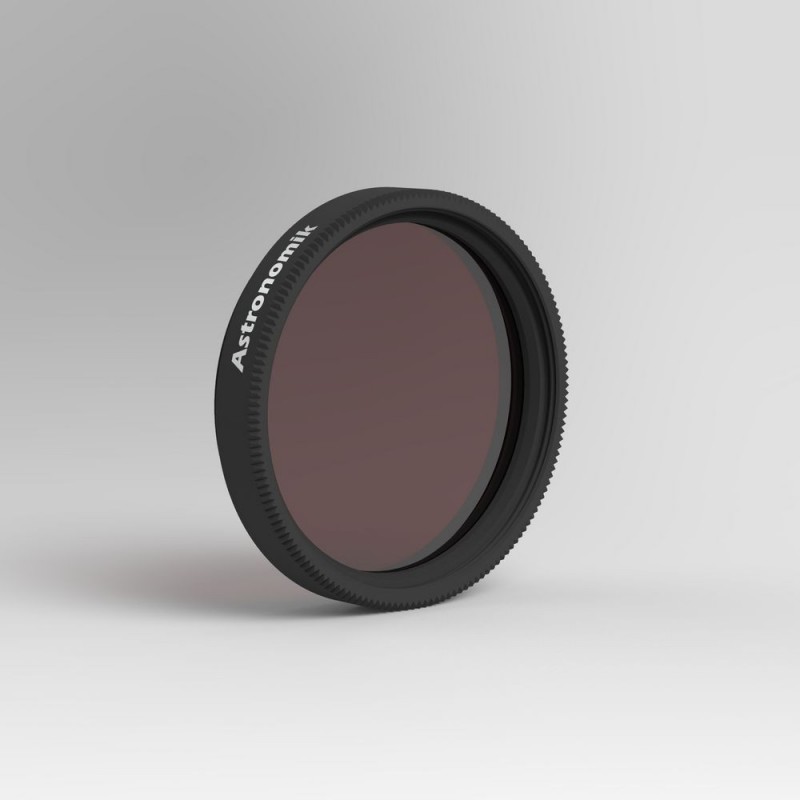
Reference: ZWEAF-N
Brand: ZWO
Reference: ZWEAF-N
Brand: ZWO
Reference: POA-URANUS-C
Brand: Player One
Reference: POA-ACS
Brand: Player One
Reference: AS-FRA400
Brand: ASKAR - Sharpstar
Reference: ZWASI120MINI
Brand: ZWO
Reference: AS-SET-DUO-D1D2
Brand: ASKAR - Sharpstar
Reference: ZWDC-Y-SPLIT
Brand: ZWO
Reference: AS-REDFRA400
Brand: ASKAR - Sharpstar
Banner




The new design of interference filters from astronomik offers more contrast on your images
 security
security
100% Secure Payment
 Delivery policy
Delivery policy
Express shipping of in-stock parts
 RETURN POLICY
RETURN POLICY
Express shipping of in-stock parts
|
⚠️ Please choose your filter version in the drop-down menu under the mini description |
This SII-CCD filter is suitable for imaging SII regions from observation sites with light pollution and dark sites as well. The contrast between a bright 672nm object and the background is increased enormously!
Due to the combination of the narrow bandwidth of 6nm and the high transmission of typically 96%, the filter gives you a huge contrast boost, as any unwanted light from other wavelengths than 672nm is blocked from UV to IR. This results in an extremely dark background.
The 6nm FWHM is tuned to give you optimal performance with CCD and CMOS sensors with very low dark current! The 6nm filter is the best choice if you are observing from a heavily light-polluted site or imaging faint objects in star-crowded regions of the Milky Way.
Thanks to the new MFR coating technique, you can use a single filter on all instruments up to f/4 without a significant reduction in performance.
If you have to observe from light-polluted sites (like most of us...), imaging with narrowband filters is the best way to take great images, because any kind of light pollution can be blocked very effectively! Normally an H-alpha filter should be your first step into this amazing field of astrophotography! With a narrowband H-alpha filter, you'll be able to take deep, high-contrast images even with very strong light pollution or with the full moon high in the sky!
If you look at other astrophotographs, an H-alpha is the best choice for all glowing nebulae! An OIII filter expands your imaging possibilities, as you are able to image all greenish/bluish structures. Planetary nebulae and star forming regions are excellent targets! SII filters complete your HSO filter set. With these three filters, you can process your images like those from the Hubble Space Telescope!
The h-beta filter is not available in a 6nm version, as this filter has almost no significant application. To illustrate this, two images are shown below: Both were taken with an unmodified Canon 650D. Even though the camera has less than 10% sensitivity at H-alpha, there is some signal and structure in the h-alpha image, whereas you can't see anything in the image taken with an H- filter. beta!
The filter blocks out any unwanted light from artificial light pollution, natural air glow and moonlight. In particular, light from high and low pressure sodium and mercury lamps and all lines of natural light are 100% blocked. The filter increases the contrast between the sky background and the objects that shine on the line xx to xy nm.
Using the xx filter with the OIII-CCD and SII-CCD filters produces false color emission line (HSO) images similar to the Hubble-Space Telescope. This is possible even from heavily polluted sites!
No customer reviews for the moment.
Reference: BA-2961570
Brand: Baader Planetarium
Reference: 8H00DP
Brand: Astronomik
Reference: ANHA3-125
Brand: ANTLIA
Reference: 8H11HE
Brand: Astronomik
Reference: L-ENHANCE-EOS-CLIP
Brand: Optolong
Reference: ANLRVB-36C
Brand: ANTLIA
Reference: 8H00IE
Brand: Astronomik
Reference: 8H11HY
Brand: Astronomik
Reference: 8H0050
Brand: Astronomik
Reference: POA-IR850
Brand: Player One
Reference: AS-SET-DUO-C1C2
Brand: ASKAR - Sharpstar
Reference: 8H00DN
Brand: Astronomik
Reference: 8H11F9
Brand: Astronomik
Reference: BA-2961250
Brand: Baader Planetarium

The new design of interference filters from astronomik offers more contrast on your images
check_circle
check_circle